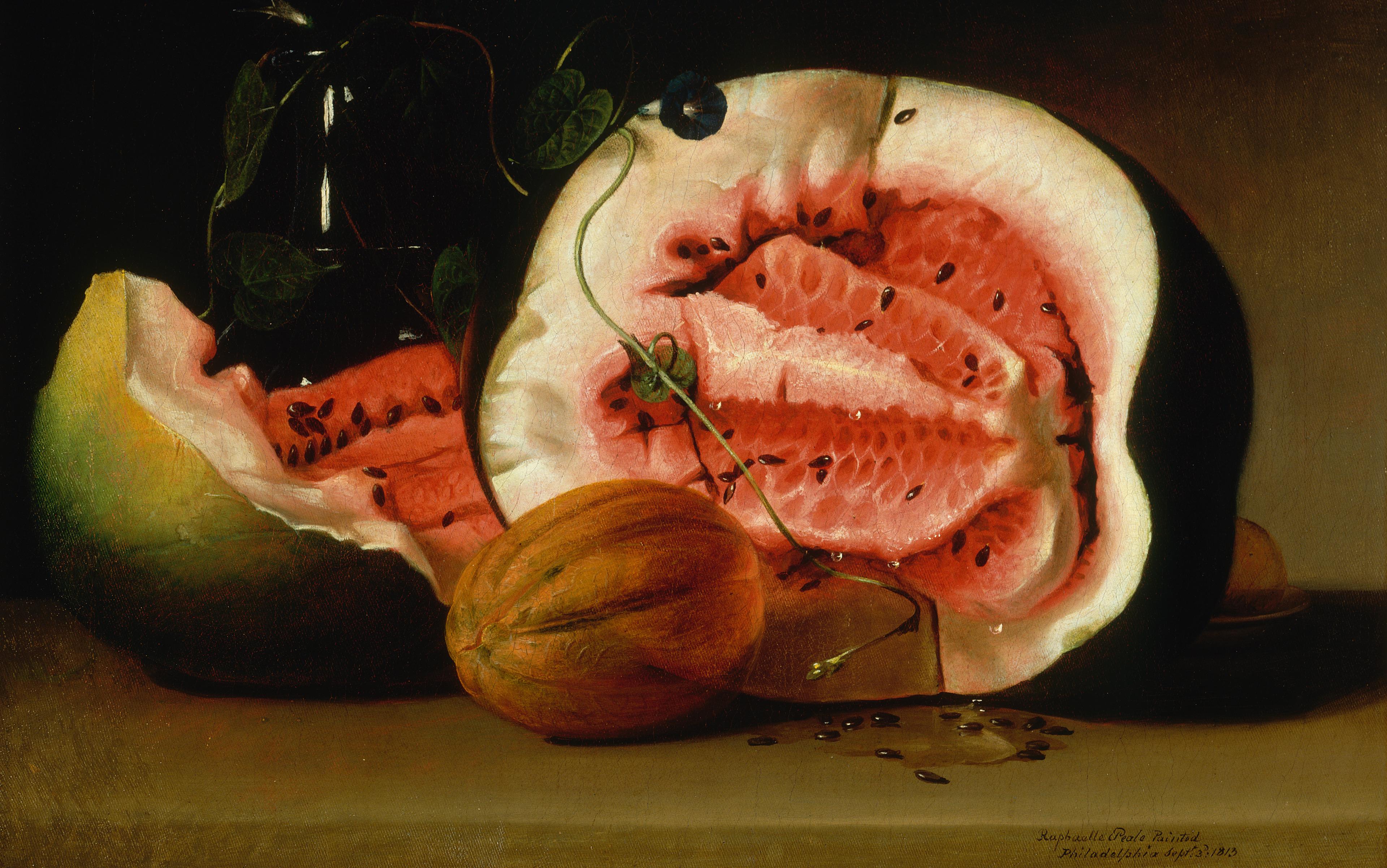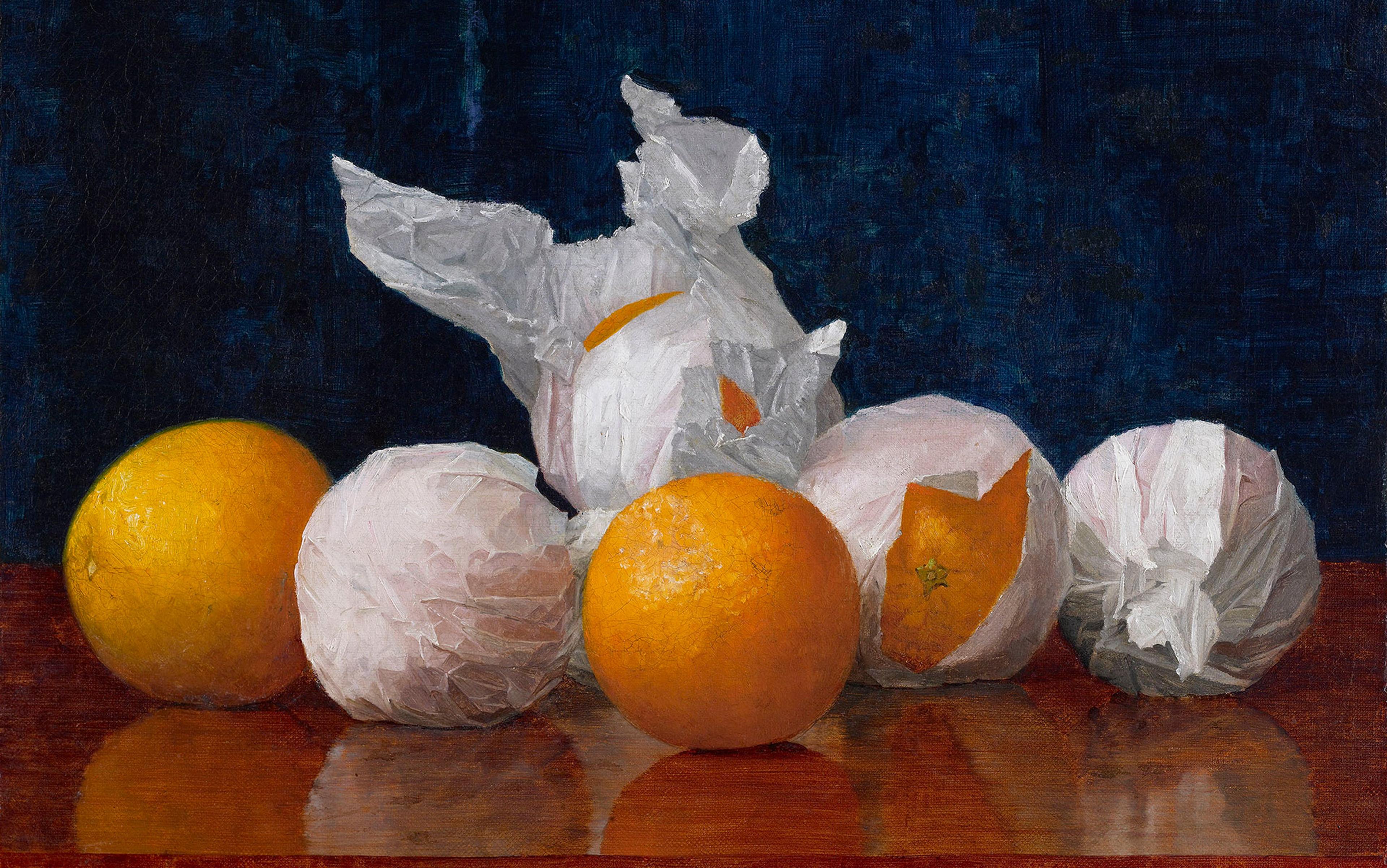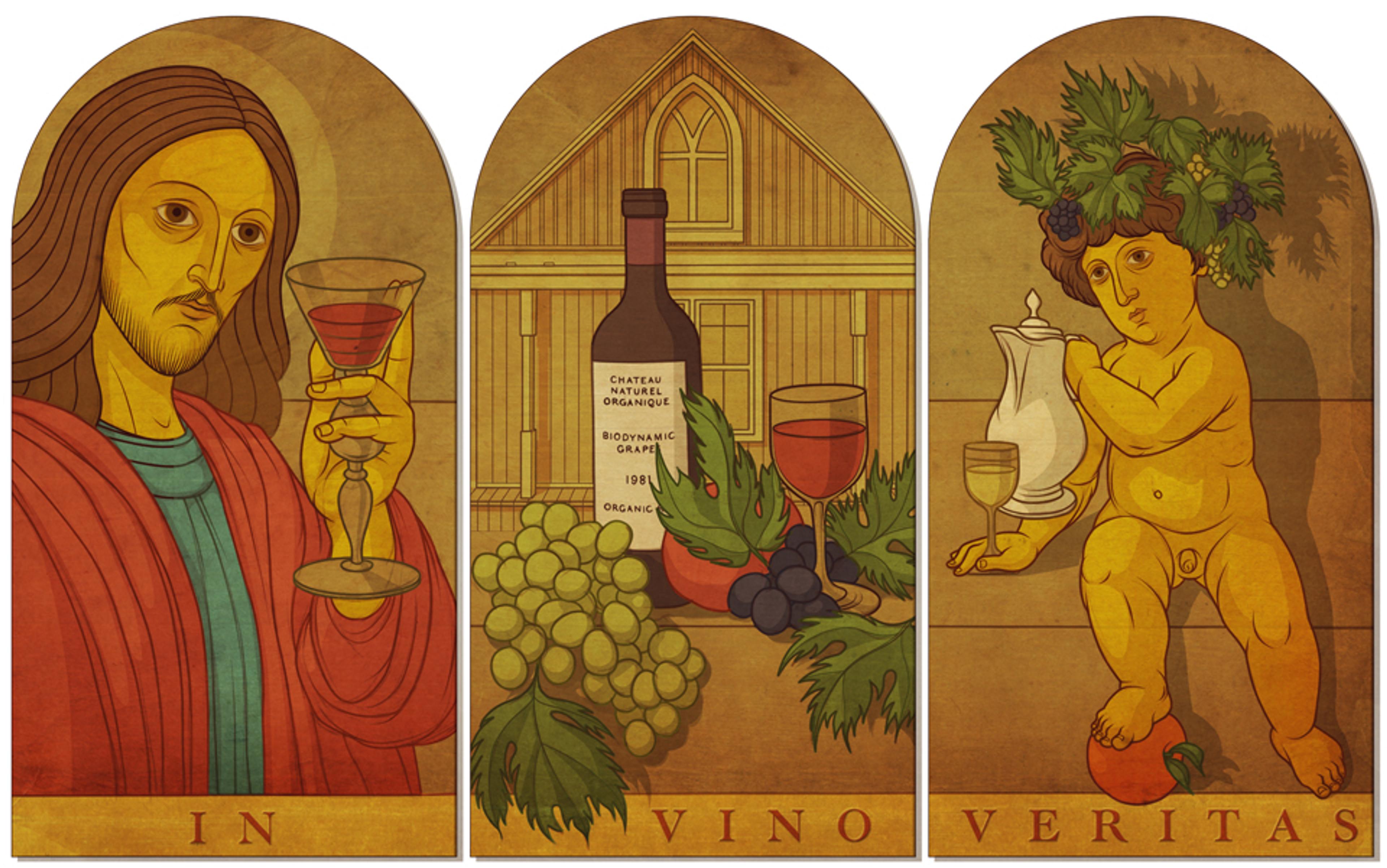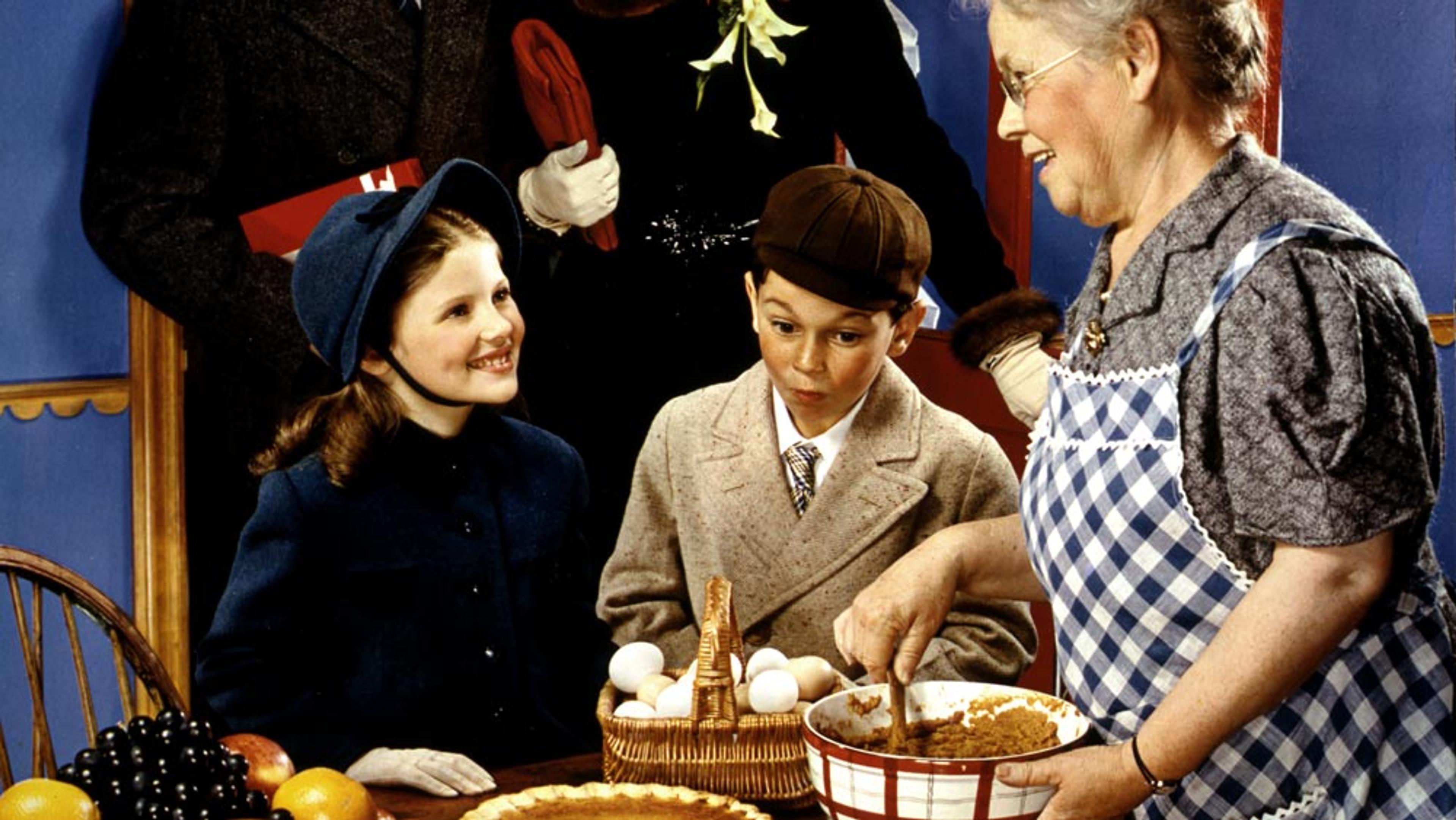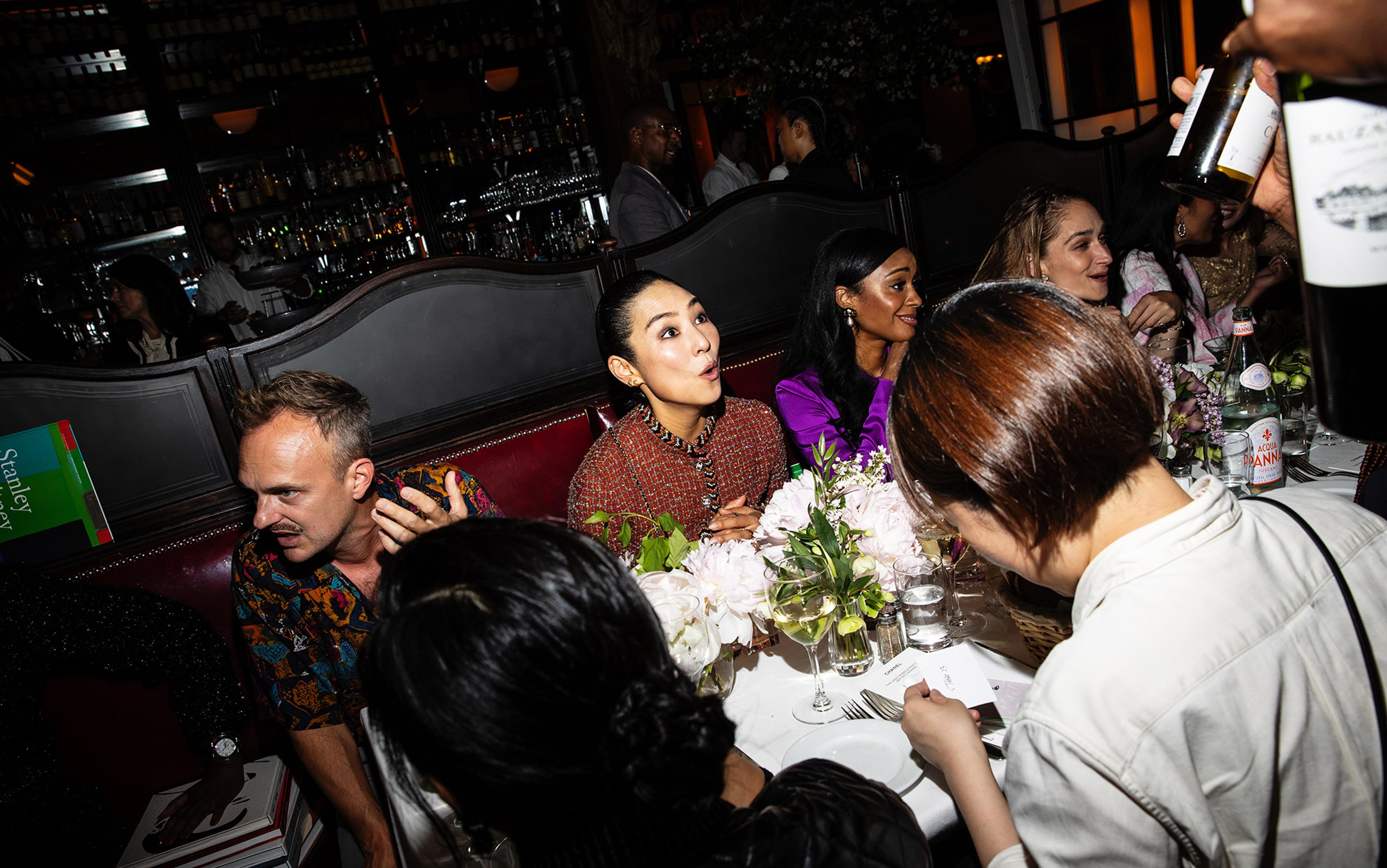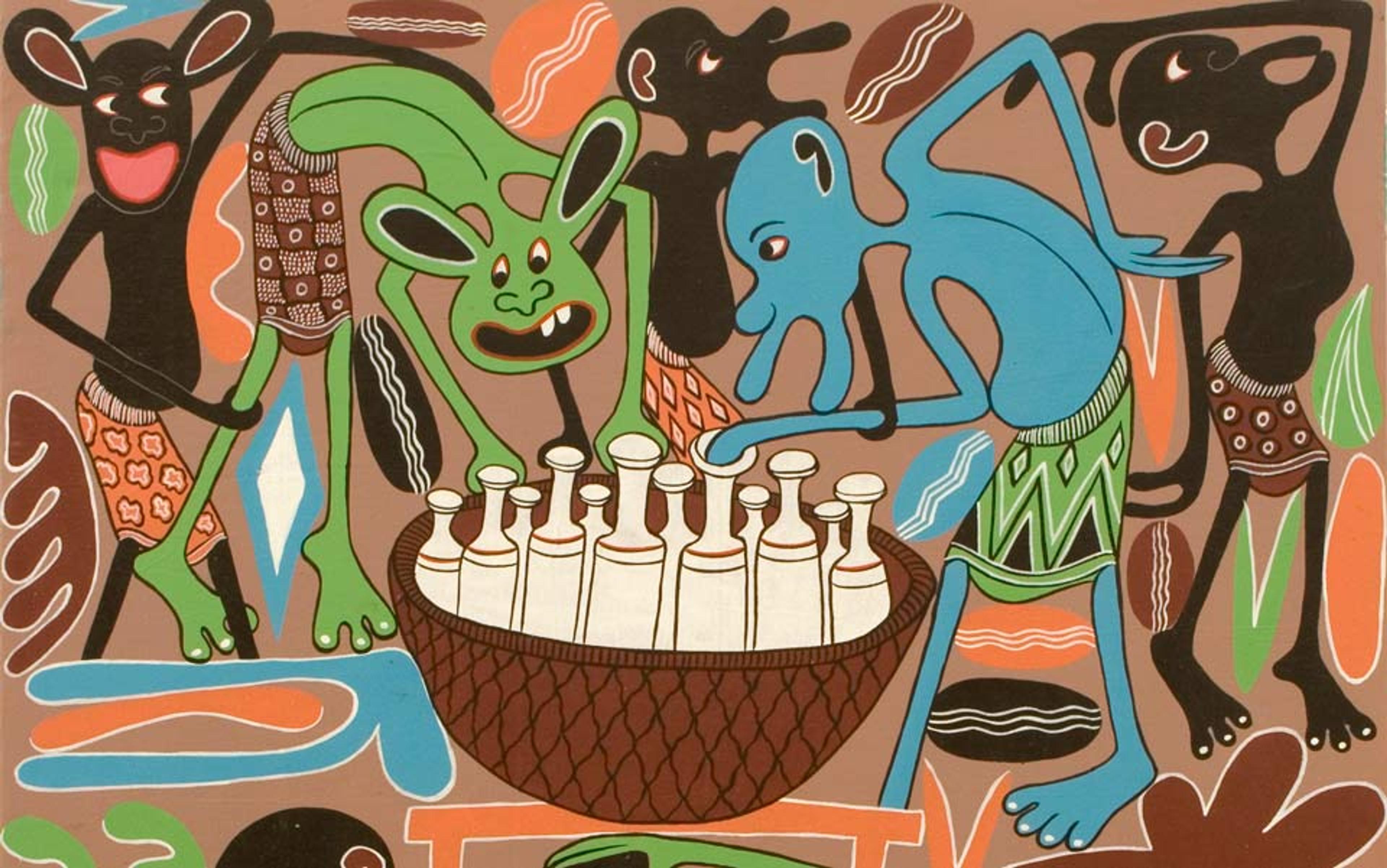One summer afternoon in the city of Sumter in South Carolina, three men – a farmer, a scholar, and a landscape architect – stood in a field boiling watermelon juice. They had pressed the juice themselves from Bradford watermelons, a favoured fruit of the antebellum South. The Bradford has white seeds, deep ruby flesh, and a rind so soft it can be scooped with a spoon. It had been thought extinct since the early 1900s, when watermelons with tough rinds suitable for shipping displaced it. But it had been quietly growing for more than 100 years in the backyards of eight generations of Bradfords, endangered but not dead, like the African southern white rhino.
Glenn Roberts (the farmer), David Shields (the scholar) and Nat Bradford (the architect, and heir to the 180-year-old Bradford watermelon breed) had been labouring under a blistering sun for most of that August day in 2013, cutting open watermelons in the dusty field, straining the seeds out, pressing and heating the liquid in a sorghum evaporator – a huge steam pan lofted over a propane-fired field oven – until it flared to a fiery red. Finally, towards evening, it was ready: a molasses that had not been made since the end of the Civil War.
Shields recalls the taste as a revelation on the tongue. ‘It had a base note of sugary molasses and a middle range of this deep watermelony thing and a sort of honeysuckle top note. And I thought to myself, of all the lost melons of yesteryear, this is the one I wished would return. And it has. It’s the taste of the past but it’s also the taste of the future.’
Later that summer, 273 Bradford watermelons were juiced by hand at the High Wire Distilling company in Charleston, South Carolina. The juice was rested in barrels for three months and distilled into 143 bottles of heirloom brandy with a light, cucumber-like rind flavour and a delicate watermelon finish; they quickly sold out. In 1882 the South Carolina Pickens Sentinel had praised that brandy: ‘as clear as a crystal… with an odour like that of bay rum’. The soft rinds were taken to the Culinary Institute of Charleston, pickled and packaged into 400 one‑quart jars. This year, Nat Bradford (who has used the watermelon proceeds to fund a freshwater mission project in Tanzania) plans to grow at least 1,000 watermelons.
‘Tasting an heirloom cultivar prepared in the classic way is like discovering a lost masterwork,’ says Shields, a professor of literature at the University of South Carolina. ‘It’s like listening to Thomas Tallis’s Spem in Alium, a Renaissance choral masterpiece for eight five-part choirs. When you hear it, you sense what heaven must have sounded like then. It’s the same when you taste restored cultivars prepared using recipes of an earlier time.’
Shields is the author of Southern Provisions: The Creation and Revival of a Cuisine (2015). He and Roberts, who owns the artisan-goods purveyor Anson Mills, source grains and seeds from gardens, collections or bootlegger’s fields. Then they work with plant geneticists to authenticate them, cajole farmers to grow them, and inspire chefs to prepare them, often using historic recipes from newspapers and letters of the time. They are slowly managing to exhume and revive the golden age of the antebellum culinary past that blended African, European and American foodways – from groundnut cakes (based on the wild African peanut brought over by slaves) to sorghum butter.
The two men sum up their deep affiliation of the past decade as one long conversation – at the centre of which is the question: can we have a canon of taste? Can we approach cuisine as we do architectural restoration, classical music or great masterworks of art? Above all, can they bring lost flavours to people who consider the culinary pursuit an art?
Shields and Roberts are not alone. There is a growing global movement to establish a culinary canon and to restore the actual local ingredients that composed it. Why shouldn’t there be a canon of taste, like other canons of our civilisation, those of literature, art, music, architecture, religion and science? We have a global palate now, and with that, a new willingness to cross-pollinate and revivify regional foodways – and even ways of staging food at the table.
Even in the most unassuming places, artisanal traditions are being newly recreated: ‘I just came from Norwalk, Iowa, out in the middle of nowhere, and there was this incredible charcuterie,’ says the chef Dan Barber, founder of the internationally acclaimed Blue Hill restaurant in New York. The charcuterie, La Quercia, creates artisan-cured meats by hand from local, acorn-fed pork, and has become world-renowned.
From Einstein to Mozart, Buddha to Van Gogh, Michelangelo to Emily Dickinson, certain works – and their creators – are so universally and deeply felt that they enter the realm of the immortal dead, what the 19th-century English novelist George Eliot called a ‘divinely human’ choir. They belong to a canon that is culturally transmitted, broadly influential and amazingly long-lived. A canon is as much about the artistic, scientific or literary power of a work as it is about popularity. Canons are not simply pure expressions of cultural power; they are phenomena of cultural psychology, according to James Cutting, a psychologist at Cornell University and the author of Impressionism and its Canon (2005). Exposure markedly affects preference. We like what we have encountered before. In that way, all canons are flawed and fluid, and do not include the indisputable ‘best of the best’ – but they do a pretty good job of distilling a civilisation’s high points.
the grape that is distilled into Cabernet Sauvignon wine is universally praised, and its taste has become inviolate. No new grape can supplant it
Even the briefest musical passage can become canonical: four notes – three Gs and a long E-flat – constitute the opening of Beethoven’s Fifth Symphony, a triumphant affirmation of life from a man nearly deaf at the time.
And yet, history has never offered up corresponding touchstones for cuisine, nor formally measured human greatness by a good meal. We have traditionally regarded cuisines as pop or folk art at best – cherished but ephemeral, beginning as peasant food forged from the local landscape and naturally disappearing as people emigrated and landscapes changed.
A single taste can resonate down an entire lifetime like Marcel Proust’s peerless madeleine. A taste can be so revered that we try to freeze it in time: the grape that is distilled into Cabernet Sauvignon wine is universally praised, and its taste has become inviolate. No new grape can supplant it. Similarly, Shanghai once staked its reputation on the white-fleshed peaches grown in its walled gardens, and to this day the delicate peaches are wrapped individually in newspaper and consumed within hours or days of picking. They are a distant relative of the famous Georgia peach, which comes from a pollinated seedling of the Chinese clingstone peach near Shanghai.
Cuisine has always been an intimate expression of a given locale’s ‘terroir’, the geology, climate and microbiology of the soil giving rise to the indigenous ingredients comprising its food. The culinary art flowers out of necessary skills, like foraging, hunting, fishing and trapping, all of which once intimately connected humans to the wild. Sentinel dishes infuse themselves into the culture, social mores and taste buds of a place and time. And cuisine has, of course, had its own hagiography that stretches back at least to the early 1800s, when the French chef Marie-Antoine Carême published his five-volume survey L’Art de la cuisine française au dix-neuvième siècle: Traité élémentaire et pratique. William Kitchiner, an English optician and cookery enthusiast, wrote The Cook’s Oracle in 1822; and James Beard’s American Cookery (1972) quickly became a classic.
But the increasingly popular view that taste itself can curate culture along with other cultural canons is relatively new. The psychologist Paul Rozin, who teaches a course on food at the University of Pennsylvania, thinks it has happened slowly over the past 20 years. ‘Cuisine was traditionally regarded as a sort of low art,’ says Rozin. ‘Everybody had to read Shakespeare, but nobody was required to know what Chinese cuisine consisted of. But I think that’s changing. Cuisine has become very creative. Tasting menus are becoming more and more popular. You attend a restaurant as you do a concert. The composer, in this case the chef, tells you what is on the menu, and you all experience it together.’
The steady ascendance of the culinary arts can be charted in the spread of the French Michelin Guide, which began offering a star for restaurants in 1926, eventually expanding to three stars and slowly adding guides in other countries. By 2013, the guide was selling in 90 countries, with 14 editions. The culinary conversation went global in 2002, when the World’s 50 Best Restaurants, published annually by Restaurant Magazine, was established.
This culinary conversation broadened with international plane travel, television shows that blended food with travel, and celebrity chefs who held forth with their own TV series and cookbooks. Cross-fertilisation of ideas became the norm. ‘Twenty years ago in France I was in a restaurant where a bit of Indian tandoori spicing was incorporated,’ says Marlena Spieler, an award-winning food writer from California. ‘Back then, it felt like a daring move for a land devoted to its own culinary tradition.’ Today, such pollination is common.
Somewhere in all that exchange, a new idea was born: to explore the pure ingredients that have inspired every great cuisine. The ingredient itself – the ineluctable thing itself, the pure taste on its own – began to take centre-stage. As Shields points out, the technology of cooking has morphed many times in the past 200 years – from hearthside to coal cookstove to gas range to electric and convection and microwave. Even terroir is subject to climate change and pesticides and monocropping.
‘The chefs lovingly cradled each peach on its way to the plate; the waiters ferried them away, walking gingerly’
One might mark 1987 as the year when a canon of taste was born, when the Barcelona chef Ferran Adrià was put in charge of El Bulli, a restaurant perched on a remote corner of coastal Catalonia in Spain, near the French border. It soon became the most famous restaurant in the world – at one point staffed by 42 chefs – and Adrià was compared to the Picasso of cuisine. What set him apart was his talent for reframing the canon so that the ingredient was the fundamental revelation. For example, Rozin recalls Adrià’s piña colada, made of the typical constituents, but utterly transformed: ‘It had pineapple juice and coconut poured over spun sugar. It was like cotton candy and melted in my mouth. It was an experience I’ll never forget.’
Adrià might deconstruct and reconstruct an omelette, serving potato foam, onion purée and egg-white sabayon (a light, mousse-like dessert) topped with deep-fried potato crumbs in a sherry glass. The ultimate message was the delicious shock of experiencing new culinary art using canonical ingredients. Apprentices at El Bulli have taken the lesson to heart: the Danish chef René Redzepi at Noma in Copenhagen has risen to fame using local ingredients such as cloudberries, lichen or even forest moss that he then studs with stones and chocolates, a presentation that demands the diner ponder our foraging past and culinary future.
The US chef Alice Waters offered a similar reframing at her restaurant Chez Panisse in Berkeley, California, which is well-known for serving a lonely peach on an empty plate for dessert. In his book The Third Plate (2014), Dan Barber recalls his shock the first time he saw this. ‘I gasped because it was so crazy,’ he says. ‘The chefs lovingly cradled each peach on its way to the plate; the waiters ferried them away, walking gingerly.’ On the menu, the dessert was listed by the last name of its Californian farmer, David Mas Masumoto, and the fruit itself, the Sun Crest Peach. ‘I bit into it… The juice ran down my face and chin… It was the best peach of my life… What Alice was saying was: Taste what Mas Masumoto created; I can’t do better.’ Because of that peach, and the way she served it, Barber stayed on to apprentice with Waters.
Last summer, I stopped by a white-frame house on a curving, shady lane by Lake Allatoona in Georgia. A stately apple tree stood out front. The owner had set out a roadside stand with baskets of fresh Granny Smith apples laid upon white towels. I took 10 scarred, unpolished, unshining, lopsided green apples and left a dollar. I ate them all in a single day and went back for 10 more. Those apples were like the famed wrinkle in time that lets you step instantly across light years. I merged with my child self, tasting a tart and succulent fruit with indescribable base notes and top notes that I could never put into words. My apple. My childhood. My forgotten self.
All commercial apples, including Granny Smiths, have been hybridised to a sugary monotone that has turned them into an Andy Warhol version of themselves, without the artist’s clever humour. I hate today’s apples. I am not a chef. I am not a curator of cuisines. I don’t read cookbooks. And yet I know exactly what Shields, Roberts, Barber and Adrià are after. I think we all do.
‘I don’t care if certain ingredients can only be paid for by plutocrats with bags of gold krugerands. As long as the ingredient is saved’
Shields puts it this way: ‘There is a group of us who want to know the deep flavours of what has endured longest. Those ingredients that mattered for so long that they became “the taste” of the time, the points of reference against which all innovations were measured. For me, those ingredients constitute the canon, and the dishes of the time frame them.’
Purple straw wheat, for instance, was grown throughout the colonial South, and survived until the 1970s. Why was it a survivor and why did it nearly die? ‘It was a light sweet white winter wheat favoured for baking cakes,’ says Shields. Recently, it was boarded onto the global Ark of Taste, the register of the most endangered and historically important foods in the world, maintained by an organisation called Slow Food International. Says Shields: ‘Personally, I don’t care if certain of the ingredients that I bring back can only be paid for by plutocrats paying with bags of gold krugerands. As long as the ingredient is saved.’
But often that price isn’t obscene. Nat Bradford sells a packet of 12 watermelon seeds for $10 and donates the proceeds to his freshwater mission in Tanzania. Each watermelon that grows will produce hundreds of seeds, as will its progeny.
On 19 April 2015, a popular antebellum cocktail was reborn: Brandy Smash, a mixture of Bradford watermelon molasses and watermelon brandy, syrup, water over crushed ice and an orange garnish. It was served at an interracial celebration for 80 diners held at McCrady’s Restaurant in Charleston, South Carolina, run by the Virginia-born chef Sean Brock.
The feast honoured a freed slave named Nat Fuller, a celebrated Southern chef of the time. Fuller had hosted an interracial meal in 1865 to commemorate the end of the Civil War. The event was eventually lost to history, but Shields rediscovered Fuller in newspaper archives of the era, and his dinner honoured that important historical and culinary moment. The menu was true to the recipes of the time.
According to the High Wire Distilling company’s owner Scott Blackwell, Brandy Smash was the hit of the bar. The Bradford had indeed returned, and Blackwell said the antebellum cocktail tasted like ‘pure summer in a glass’.
